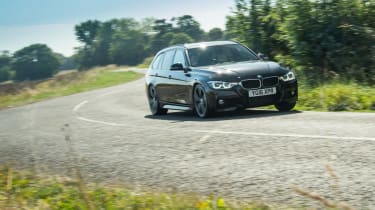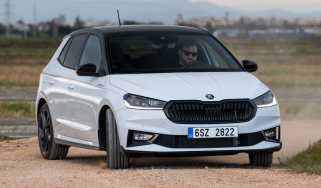BMW 3-series review - Still the best compact executive car? - Ride and handling
The latest generation of 3-series is the most comfortable yet, but some of its sporting character has been lost
Ride and handling
We might sound like we’re being needlessly fussy when we say the sixth-generation 3-series is starting to show signs that smoothness and luxury is more important than outright handling prowess. The nicely weighted and informative steering, superb combination between body control and balance, and a compact size perfect for UK roads are attributes that previous 3-series have been known for.
Although many of these are still present in the latest, F30 generation there is a little less information flowing back to you through the seat squabs and steering wheel. The subtly softer chassis is more comfortable and this 3-series has the best ride of any generation of BMW’s best-seller. On dual carriageways and motorways, it can settle into a completely serene groove that allows you to cover big distance in a relaxed, enjoyable manner. This extra comfort has eroded away some of the 3-series’ sporty character, albeit only slightly. Its ever-increasing size also doesn’t help make it more enjoyable on our tight and twisting roads.
However, the F30 has a set of strong and progressive brakes, something that older 3-series models sorely lacked.
If you dream of driving a BMW on opposite lock everywhere, hanging the back end out whenever the moment takes you, anything other than the 340i will be disappointing. Other models will oversteer if you’re aggressive enough with you inputs and totally committed. However, none of the 3-series models, no matter what the engine size, can be specced with a limited slip differential. Mechanical grip is sufficient for even the 340i not to really need one, however the lack of LSD does make the 3-series’ on-limit handling slightly unpredictable and any slides slighty scruffy. The all-wheel xDrive models initially react like their rear drive counterparts, but the front axle is called into play when a loss of grip is detected at the rear to neutralize the any oversteer.
> See how the BMW 340i Touring comapred to the Mercedes-AMG C43 Estate
There’s very little difference between the way the saloon and Touring models drive. The bigger engines mean that the extra weight that the estate carries around is hardly noticeable and it’s just as fun to hustle down a twisty road.
The GT, which is taller, heavier and saddled with a longer wheelbase, is a different prospect. The changes turn it into much more of a cruiser than the regular saloon and Touring models.




